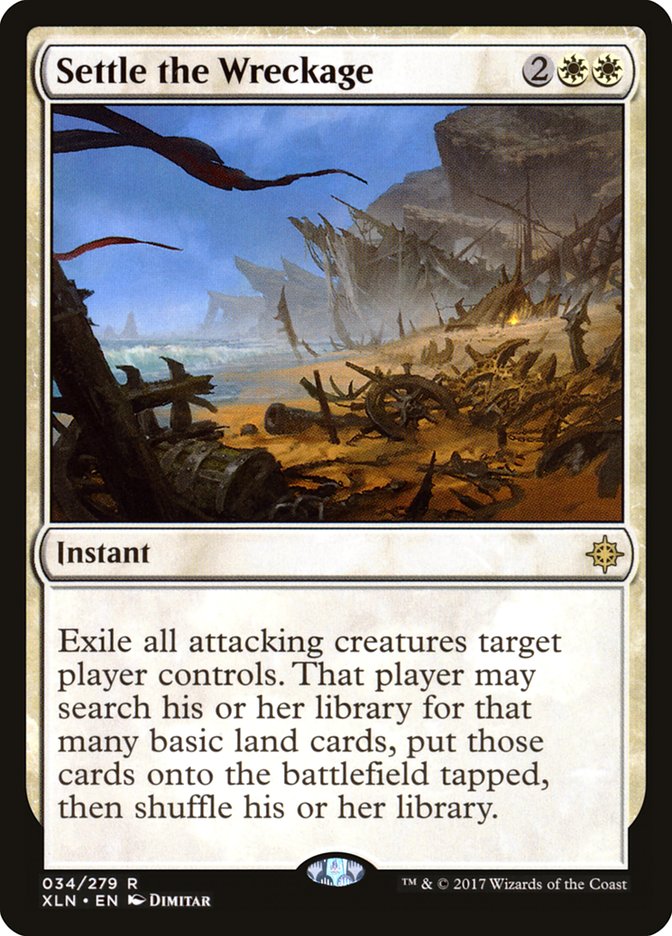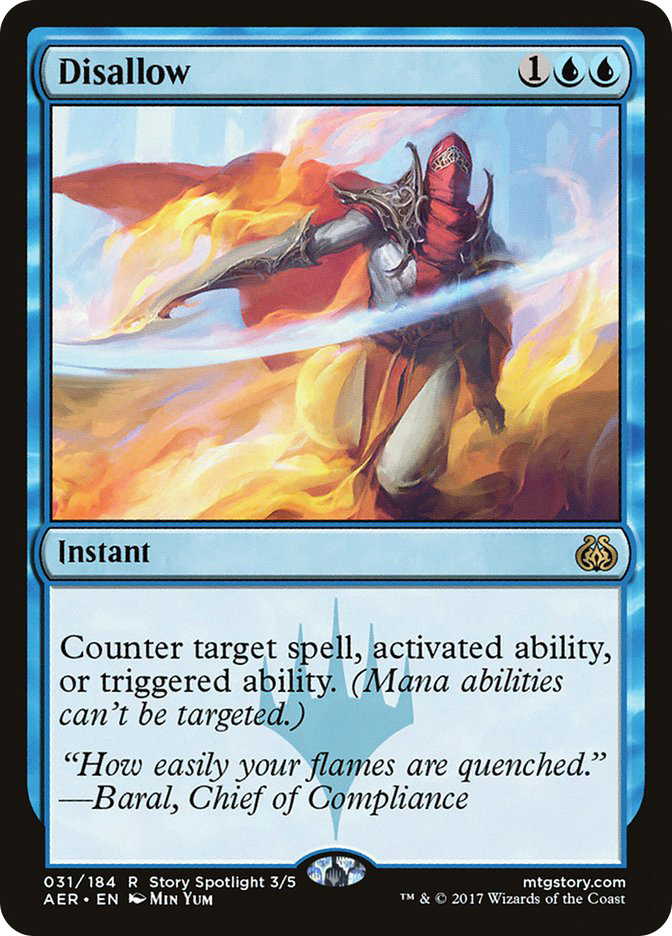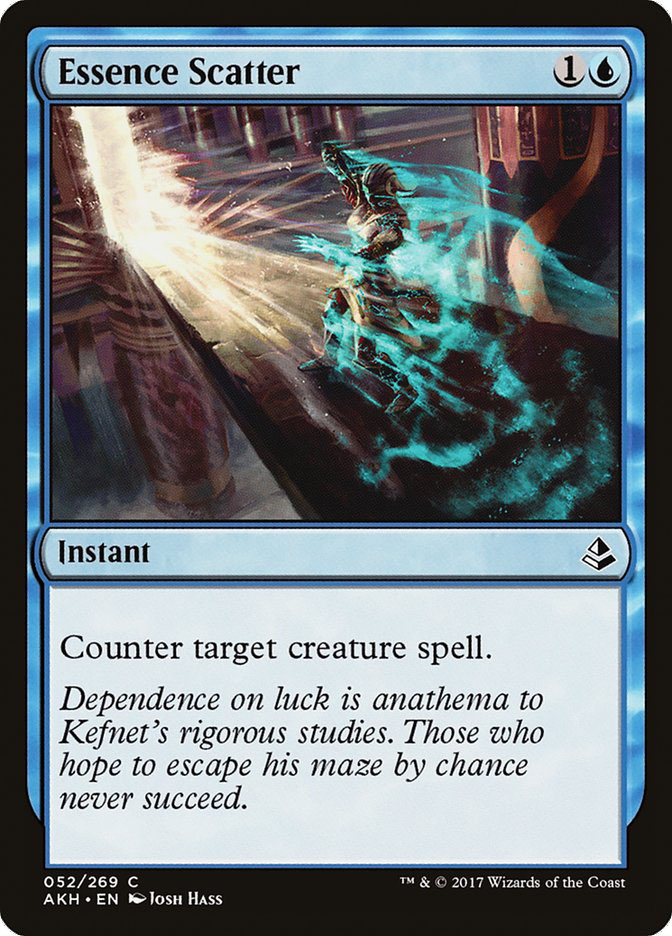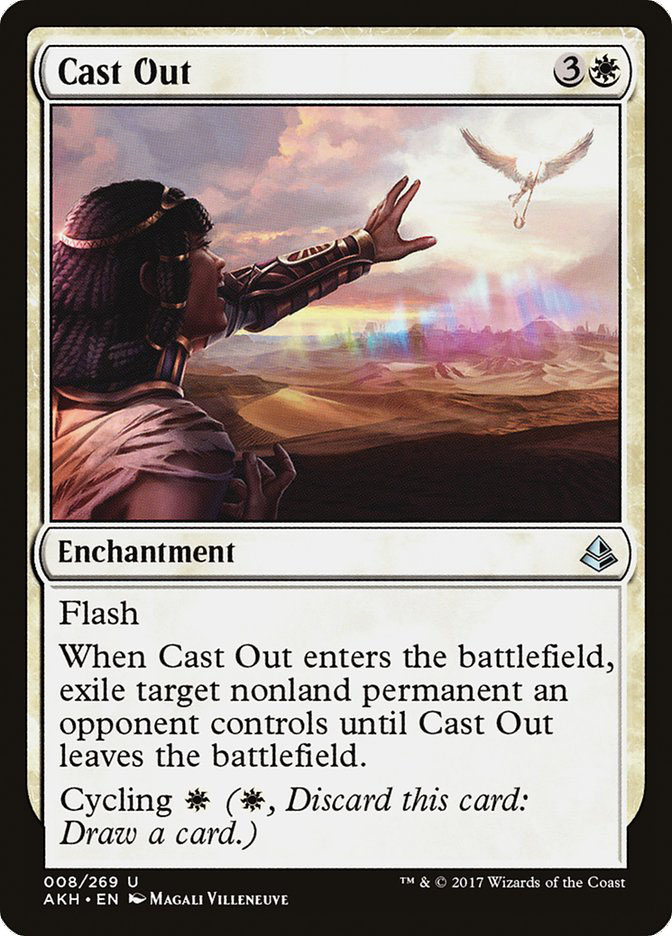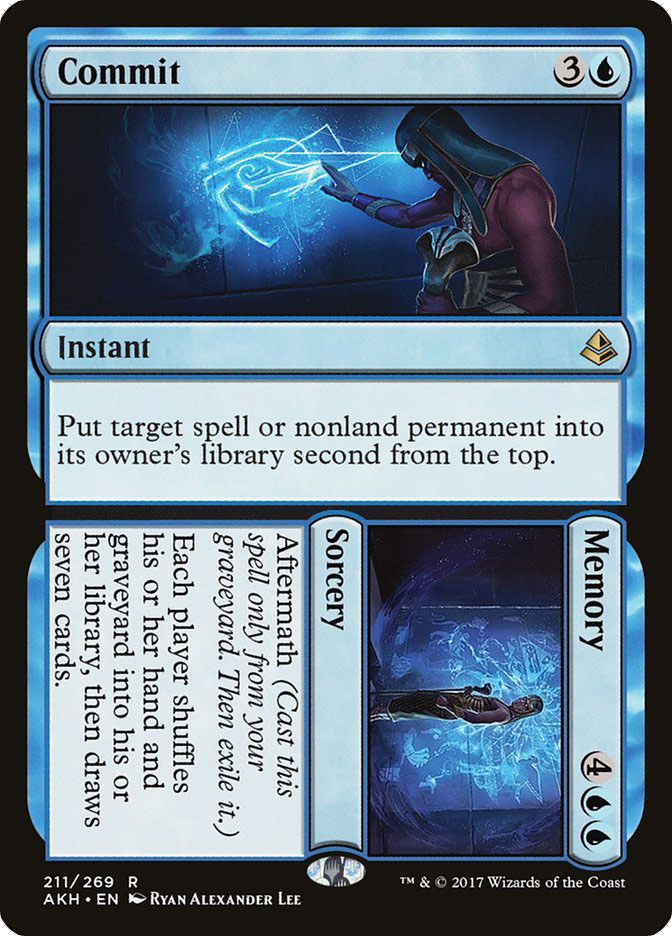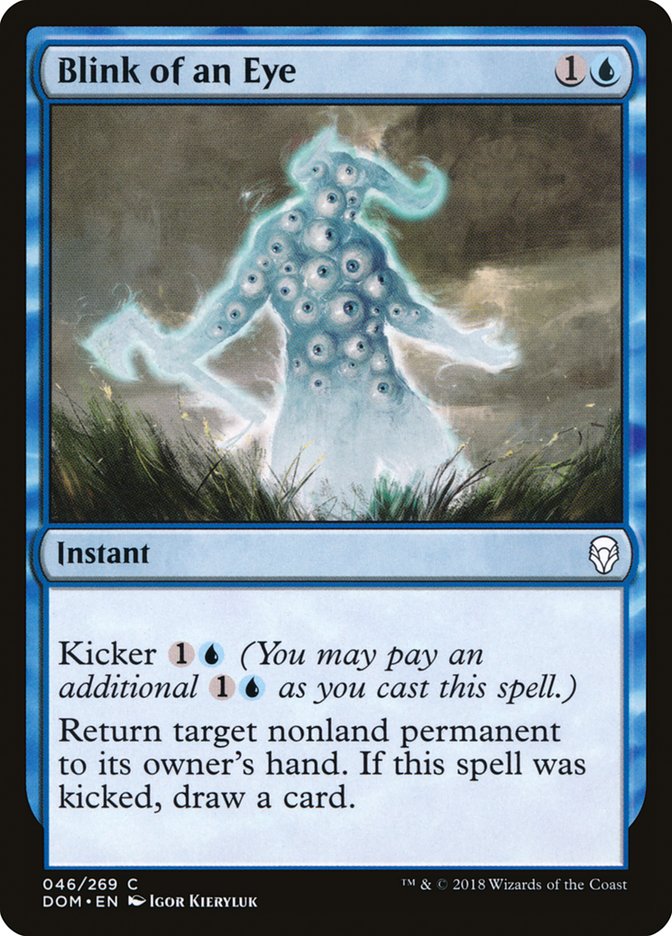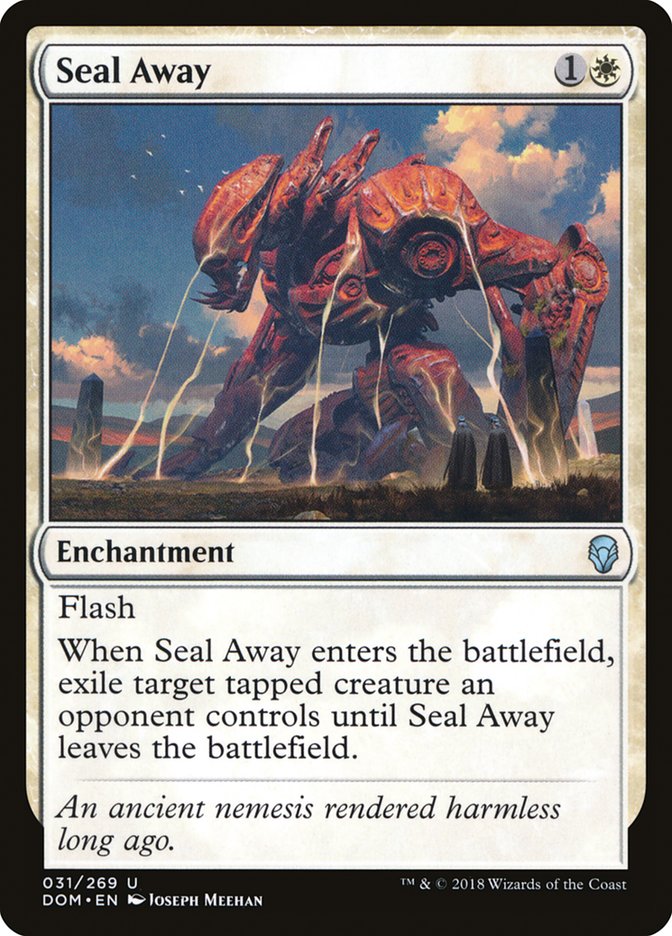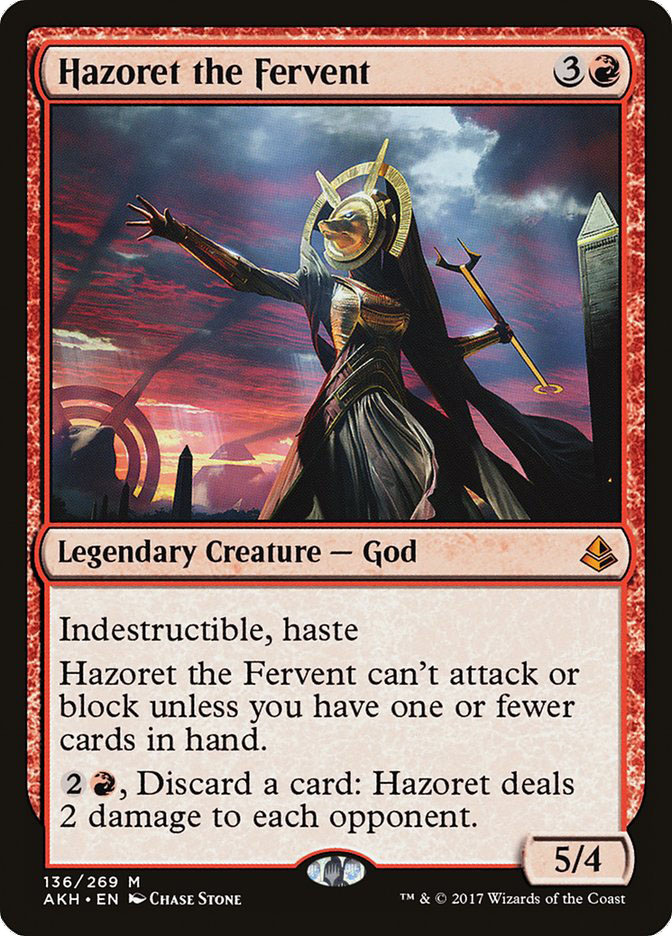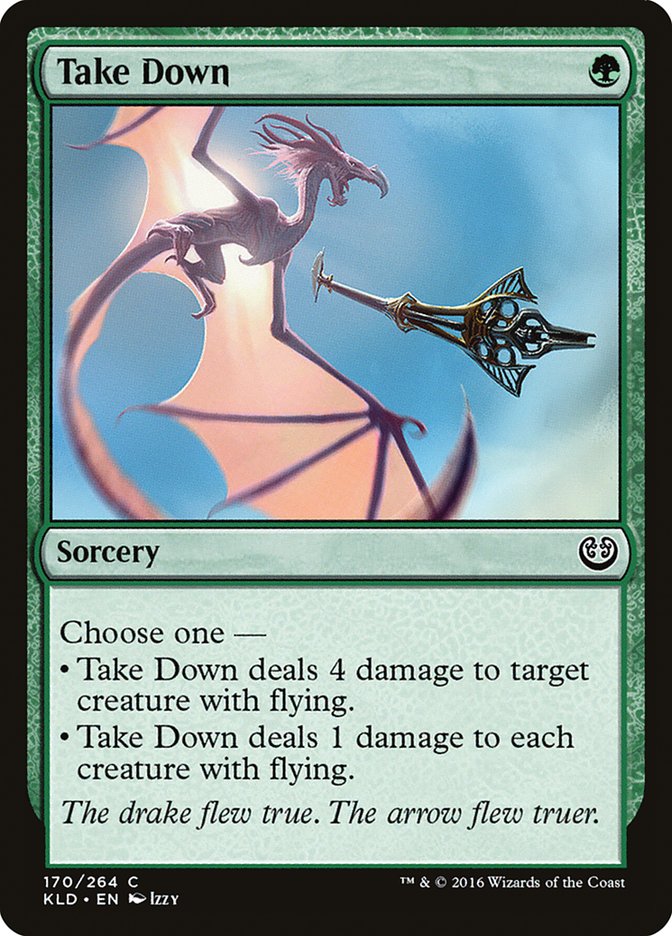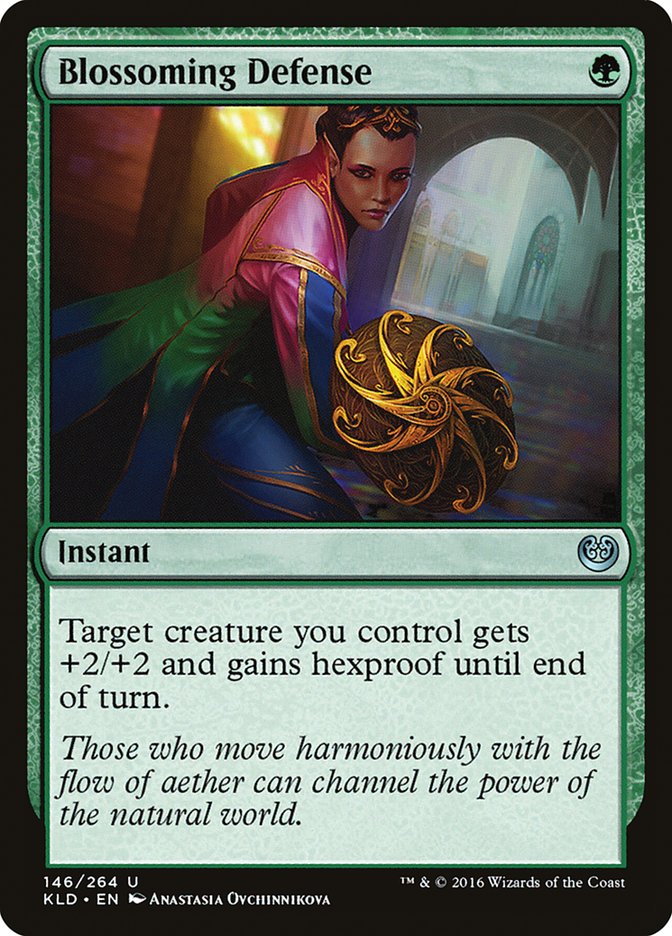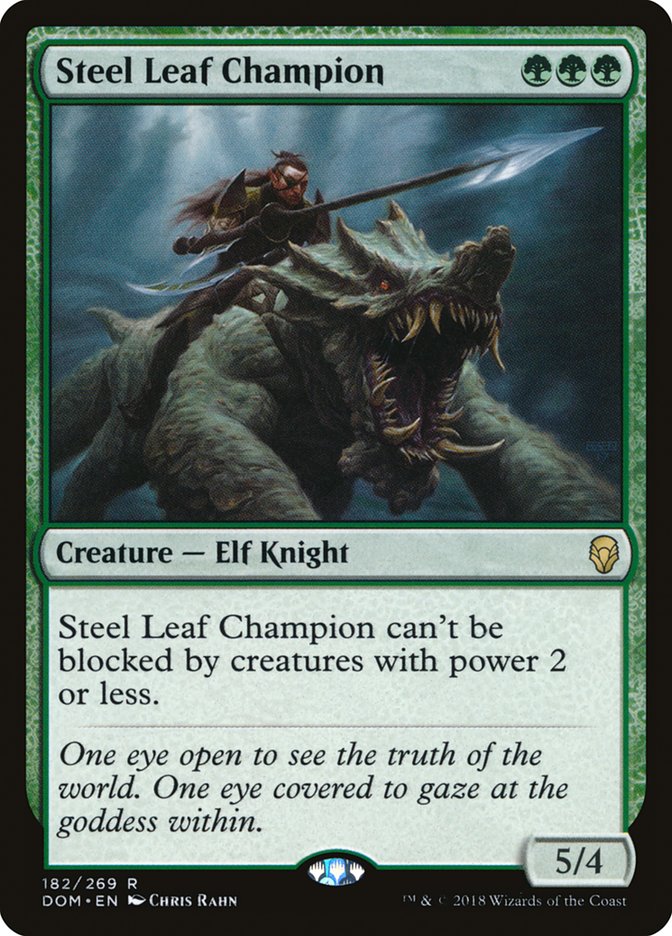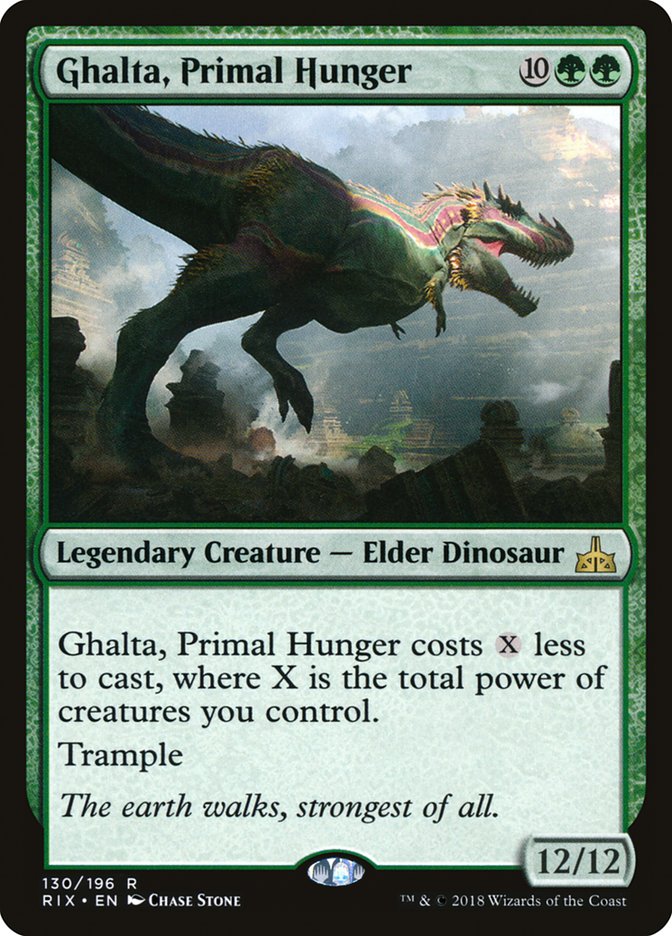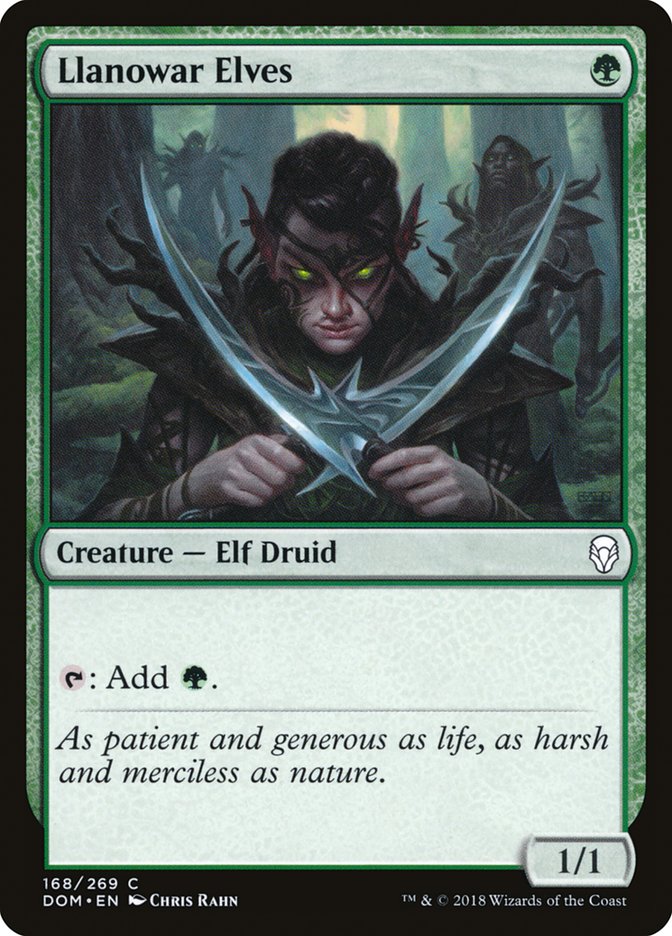Two weeks ago, I wrote a piece all about Walking Ballista and how to play with everyone’s favorite Construct in every conceivable scenario. Or at least, that’s what I sat down to write. The goal was ambitious, and I didn’t quite cover all the ground I wanted to. Luckily, I get to write one of these things every week and now I have the chance to finish what I started.
If the last article was the nuts and bolts of Walking Ballista, this one is the half-finished desk from IKEA strewn about your living room. It’s not going to be that desk fully constructed and looking gorgeous, because there’s nothing I can write that will get you to make the correct decision every time a Walking Ballista scenario pops up. Magic’s way too complicated for that.
But I can write about some of the shortcuts, the things that you’ll want to do with Walking Ballista in different matchups. You could figure this stuff out from the principles in the last article and enough time spent playing, but why would you build a desk from scratch when you have a half-finished one sitting in front of you? Making decisions based on first principles is impractical in a match of tournament Magic, as it simply takes too much time. You need shortcuts, conclusions you’ve already reached from the first principles that you can build on for the situation at hand.
Today, I want to provide you with some of those shortcuts for Walking Ballista play across the various Standard matchups.
Let’s get to it.
U/W Control
We’ll start with the scourge of Standard, the only deck that Brad Nelson thinks isn’t wrong to play, U/W Control. For reference, here’s Brad’s updated list:
Planeswalkers (4)
Lands (27)
Spells (29)

U/W Control is a unique matchup for Walking Ballista in that its primary role is not that of a removal spell. This list has no creatures whatsoever, and even the lists with Torrential Gearhulk don’t present realistic targets for Walking Ballista to kill. You might think that this means that Walking Ballista is largely ineffectual against U/W Control, but that is far from the case.
There are many pieces to the puzzle that is Walking Ballista’s strength against U/W Control, and they all feed into one another, so it’s a little hard to know where to start, but Settle the Wreckage is as good a place as any.
Settle is one of the most frustrating cards to play against out of the U/W Control decks because it’s effectively an instant-speed Wrath of God. Haste doesn’t work, Vehicles aren’t insulated from it, and they only have to pull the trigger on casting it if you sufficiently threaten them, marginally enhancing their counterspells.
Still, for all the strength of Settle the Wreckage, it does have one weakness: it gives the opponent extra lands. Often, against control strategies, extra lands in the mid-game don’t do you any good. If you had them earlier, you’d be able to pull ahead on tempo and put your control opponent on the back foot, but by the time they’re casting Settle the Wreckage, your limited resource is likely to be spells, not mana.
Enter Walking Ballista.
Walking Ballista is the one great mana sink nearly every deck in Standard has access to that lets them punish Settle the Wreckage. Obviously, having extra lands so that you can cast late-game Walking Ballistas for high X values and Fireball your opponent out is great, but that’s not the extent of how well Ballista plays here.
The best use case of Walking Ballista against U/W Control isn’t casting it for tons of mana; it’s casting it for X=1 or 2 and then activating the four-mana “add a counter” ability multiple times over the next several turns. Using your mana on spinning Walking Ballista allows you to continue to put pressure on your opponent without overextending yourself.
That this is the best use also means Walking Ballista is a two-mana threat, not an expensive one. This is important, because the way to beat countermagic is to overload their mana on a key turn. You want to save up a bunch of threats you can cast in one turn, and being able to cast Walking Ballista for just two mana is a huge help to this plan.
The final piece of the puzzle: once you do manage to sneak your Walking Ballista past countermagic onto the battlefield, the U/W Control deck is not very good at dealing with it. Cast Out answers Ballista cleanly, but everything else just delays the problem while paying you off for most of your mana investment. Against Commit or Blink of an Eye, your best bet is to remove all the counters from Ballista but one and then let your Ballista transition zones gracefully to make an encore appearance on a future turn.
They can also Fumigate to get rid of your Walking Ballista, but that’s generally a win for you. You’ll want to have few creatures besides the Ballista out so that the Fumigate isn’t good, but getting a single Ballista Fumigated is a good sequence for you.
Quick side note: I’ve wasted a lot of time thinking about using Ballista counters to kill creatures in response from Fumigate to stop the life gain. Don’t bother. You can never do better than throwing all the counters at their face.
When you put all of this together, what you end up with is a somewhat counterintuitive play pattern. You want to sneak your Ballista past countermagic and you’re more than fine with playing it for X=1, but you never want to cast it on Turn 2. You’re trying to end the game with Ballista, but you never want to attack with it. Seriously. Unless the attack is for lethal and they are completely tapped out, you should think long and hard before committing your Walking Ballista to an attack. Protecting it from Seal Away and Settle the Wreckage is that important.
Your general gameplan is to hit hard and fast with your non-Ballista threats early while your control opponent is trying to gain a foothold in the game, and then, once they manage to stabilize, you can use Ballista to force their hand on bad exchanges. You pour your extra mana into your Ballista, biding your time and forcing them to use their cards in inefficient ways in order to avoid losing to Ballista.
Ideally, you want to add a counter to Walking Ballista every turn once it enters the battlefield, continually escalating the threat it represents. At this point in the game you want to avoid making their Fumigates good, so you generally only want to control one creature besides Walking Ballista at a time. Attack with it, make them answer it, and cast another, all while getting more and more counters on your Ballista.
Eventually, they will be forced to use a card awkwardly to answer the Ballista. They will either use a Fumigate for very little value or use one of their precious Cast Outs, and you will be rewarded for all the mana you sank into the Ballista in the form of damage to their face. From there the game is generally quite manageable to win, as you’ve been activating Ballista instead of playing cards and should have plenty of resources to work with.
It’s worth noting that this strategy works best when you have troublesome noncreature permanents to further tax their Cast Outs. When you force them to use Cast Out on Ballista and then land a Karn, Scion of Urza, things tend to end well for you. In a similar vein, Walking Ballista is also very good at punishing the -3 ability on Teferi, Hero of Dominaria, further protecting your noncreature permanent.
One last point before we move away from control strategies: U/B Control variants aren’t very popular right now, but if they do rise again, you should be aware that Walking Ballista isn’t very good against them. Their whole deck is spot removal, which means Ballista isn’t a unique threat you can force them to deal with; it’s just another small creature for them to handle, and one with a bad rate on stats at that. You can play Ballista in these matchups, but you shouldn’t value it highly and there’s no need to protect it from harm like there is against U/W Control.
Red-Based Aggro
Moving right along, let’s take a look at what Walking Ballista wants to do against the R/B Aggro deck. For reference:
Creatures (17)
- 2 Pia Nalaar
- 4 Scrapheap Scrounger
- 2 Walking Ballista
- 3 Glorybringer
- 2 Rekindling Phoenix
- 4 Goblin Chainwhirler
Planeswalkers (6)
Lands (25)
Spells (12)

Let’s start with a thou-shalt-not: don’t cast your Ballista on Turn 2 and risk losing it to a Goblin Chainwhirler. If you have nothing else to do, just do nothing. It’s fine, I promise. You should also avoid building your Ballista up too big on an empty battlefield; Abrade and Unlicensed Disintegration are played in large quantities and can answer your Ballista regardless of how big it grows. Size your Ballista large enough to kill something and don’t invest much more into it.
For most decks, the primary goal of Walking Ballista in this matchup will be to keep the four-drops in check, specifically Rekindling Phoenix and Chandra, Torch of Defiance. These cards can be troublesome to deal with, but Walking Ballista goes a long way in dealing with Phoenix and weakens Chandra in the same way it weakens Teferi, by blunting the -3 ability. I went into some detail about how Ballista fights Phoenix in the last article, so check that out if you’re curious.
When pressed to play Walking Ballista on a relatively empty battlefield, you’ll generally find yourself casting Walking Ballista for X=2. That’s big enough to not die to Chainwhirler and big enough to take down a Scrapheap Scrounger on the way out if it’s targeted with a removal spell. From there, you might eventually spin the Ballista to take out a Chainwhirler, but you generally will find better uses for your mana.
Of course, you’d rather hold Ballista in your hand until necessary. Casting it after you kill the front-half of Phoenix is far better, as they won’t be able to save the token with a removal spell. Attacking a Chandra down to one or two and then casting a Walking Ballista big enough to take her down is the preferred play pattern.
***
Now for what I consider to be the fun stuff: the Walking Ballista tricks that only R/B Aggro gets to pull.
This combination is absurd. It’s extremely difficult to block a Goblin Chainwhirler that is backed up by a Walking Ballista with any number of counters. First strike plays very well with the pinging ability of Walking Ballista, and the net effect is that Walking Ballista gives Goblin Chainwhirler a virtual “can’t be blocked” line of text. Similarly, Walking Ballista can team up with an Abrade or a Glorybringer exert to take out a large creature with minimal mana investment into the Ballista.
The next point is that Walking Ballista being an artifact is a big deal for this deck. Unlicensed Disintegration is a much better spell with an artifact on the battlefield than without, and sometimes a Walking Ballista is that artifact. With some hands you will want to sequence your Ballista earlier than you would otherwise in order to ensure that you have an artifact on the battlefield when you want to cast your Disintegration. It’s definitely a balance between maximizing your Ballista and enabling your Disintegration, but being forced to cast Disintegration without an artifact is generally worse than any lost value on your Ballista.
Speaking of Disintegration, Ballista’s ability to Fireball your opponent out is at its best out of R/B Aggro. Between Disintegration and Ballista, R/B Aggro has reasonably respectable reach. Always look for opportunities to get your opponent into burn range.
When it comes to pure Mono-Red Aggro, one of the important lessons to learn is that the deck often looks very different before and after sideboarding. After sideboarding, the way you want to play your Walking Ballista is very similar to how you want to play it against R/B Aggro. They go bigger and your Walking Ballistas are important for filling the holes in dealing with their four- and five-drops.
Before sideboarding is an entirely different story. The Game 1 Mono-Red Aggro deck plays approximately infinity creatures with one toughness and Walking Ballista does a lot of work stabilizing. As mentioned in the last article, the most important thing to keep in mind with Ballista is that you want it to do two things: get a block in and kill a Bomat Courier, that sort of thing.
Walking Ballista also has another important, if undignified role: chump blocking Hazoret the Fervent. Ballista is your best chump blocker because it can block Hazoret and then remove counters to deal with other attackers, doing a very good Fog impression. This frees the rest of your team to attack, letting you actually race against the Mono-Red deck.
G/B Constrictor
Against G/B Constrictor, the most important use of Walking Ballista is simple:
If you’re not playing G/B Constrictor, your Walking Ballistas are worse than theirs. That’s just the way it is. The synergy between Winding Constrictor and Walking Ballista is the only reason G/B Constrictor is a deck, and it guarantees that no one’s Ballistas can compete. Whenever you get the chance to use your Ballista to take out theirs, you should take it.
But the hits don’t stop there. They also play Glint-Sleeve Siphoner and Llanowar Elves, both prime targets. You want your Ballistas to live through killing a Llanowar Elves, but you can lose a Ballista to kill a Siphoner that’s about to draw a card. Overall, your Ballistas are pretty good in this matchup.
If you reach a parity state after disrupting their synergies and cast a large Ballista, it’s generally better to just go ahead and kill what you can. If you cast a Ballista for X=3 while they have a Winding Constrictor on the battlefield, you should go ahead and kill that Constrictor the second they put a Ballista or a Verdurous Gearhulk trigger on the stack. I would consider doing it with an Aether Hub trigger on the stack. If you think they’re Blossoming Defense, you might want to do it before you’re forced to.
That plays into a larger strategic note on playing the deck: if you aren’t going way under G/B Constrictor, you need to disrupt their synergies at every step. Letting their cards get full value is a recipe for disaster, as you will fall behind. Many decks will rely on damage-based removal that looks very silly after a Verdurous Gearhulk resolves. Your Walking Ballistas are crucial in disrupting those synergies and will generally be pressed into service as removal and not attacking creatures. They’ll seldom maintain large numbers of counters for long.
***
As the G/B Constrictor deck, your Walking Ballistas are the bee’s knees. Not trading them off is even more important for you than for other Ballista decks, and you should place a high priority on keeping them alive. A compelling and common play pattern is to cast Winding Constrictor and Walking Ballista together on Turn 4, but if deploying a 2/2 Walking Ballista is risking it and you have no backup synergies, you might want to reconsider.
Winding Constrictor is the most important synergy with Walking Ballista. With a Winding Constrictor on the battlefield, it’s always better to spin Ballista than to deploy it for higher X values. On six mana, Ballista for X=3 will result in four counters, as will Ballista for X=1 followed up by spinning with the four mana you saved. The difference is you get to hold that mana up until your opponent’s end step and be much more flexible. If you’re worried about a removal spell in response to the spin, simply casting for a large X value may be right.
Your next most important synergy is with Verdurous Gearhulk. Gearhulk is the primary reason to play a Walking Ballista early, so that it will be on the battlefield for Turn 5 when you cast your Gearhulk. This is another spot where there’s a definite risk/reward curve on deploying your Ballista early, but here it’s worth the risk most of the time. Building up enough mana to play Ballista and Gearhulk on the same turn takes a long time, and by then the synergy won’t be game-ending. Most of the time, when you decline to play your Ballista ahead of your Gearhulk, it’s because you have enough other creatures that you don’t need the additional Ballista synergy for your Gearhulk to be excellent.
Because of how easy it is to get a lot of counters on Ballista in G/B Constrictor, it’s the deck where Ballista attacks are the most important. As mentioned in the last article, additional Ballista counters get exponentially, not additively, better because of how difficult Ballista becomes to block. Hoarding counters on Ballista in Constrictor decks is very powerful, and you should be slightly less willing to use counters to kill creatures when playing a Constrictor deck.
Mono-Green Aggro
This one will be quick: Walking Ballista is not very good against Mono-Green Aggro. The creatures are huge and getting a Ballista large enough to kill them means falling far behind on the mana exchange. Even worse, their creatures aren’t even good to block. Steel Leaf Champion can’t be blocked unless you spend six or more mana on your Ballista; Ghalta, Primal Hunger has trample; and Rhonas the Indomitable can give trample willy-nilly.
The most important thing Walking Ballista can do in this matchup is kill Llanowar Elves. You may be tempted to wait until you can make an X=2 Ballista so it can live through killing Llanowar Elves, but you shouldn’t bother. The Walking Ballista you have left over just isn’t worth enough to let them have that Llanowar Elves for any number of extra turns.
When they don’t have a Llanowar Elves, feel free to use your Ballista early to buy time. Any power you can take off the battlefield delays the deployment of Ghalta and keeps you around long enough to hopefully stabilize. I’m happy removing my last Ballista counter to kill a Merfolk Branchwalker with its explore trigger on the stack, and I’m similarly happy to spend my Ballista to get rid of Scrapheap Scrounger for a turn or two.
Be willing to cut or trim your Walking Ballistas in the matchup. They are largely ineffectual and even the uses you can find aren’t game-winning. Any matchup where a late-game Walking Ballista for an X of four or five doesn’t sound back-breaking for your opponent is a matchup where I’m not thrilled to have it in my sideboarded configuration.



